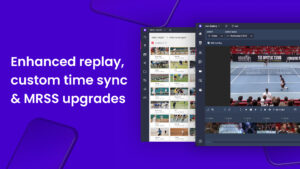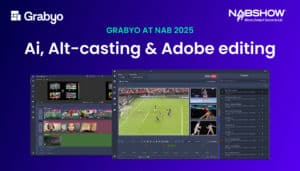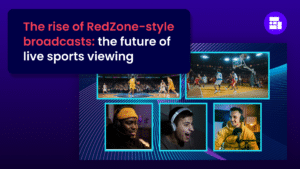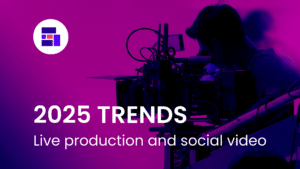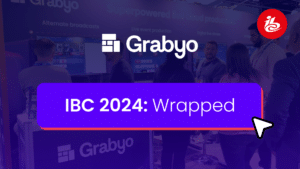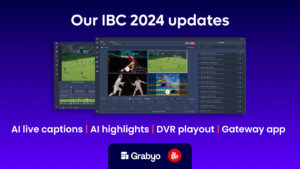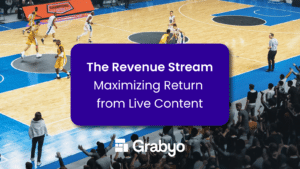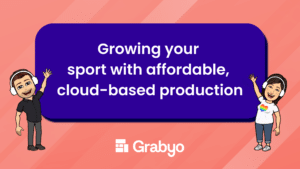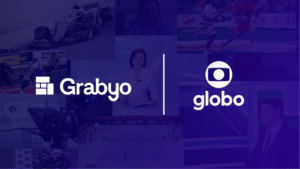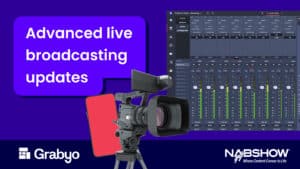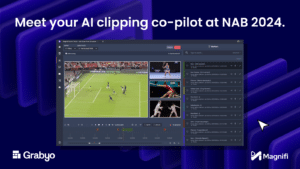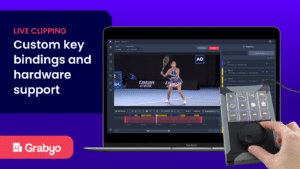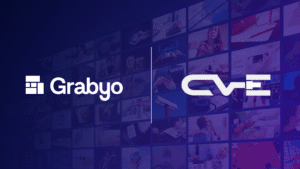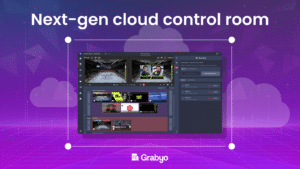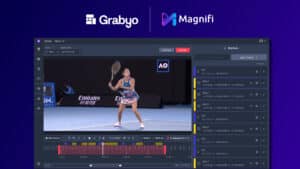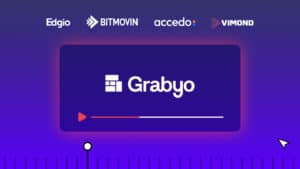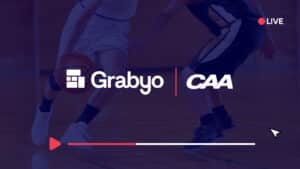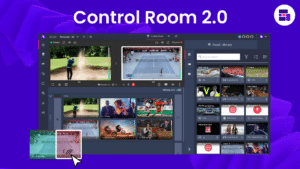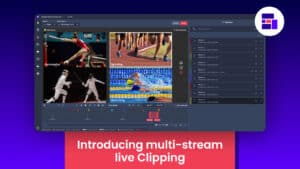
SaaS, MaaS, and LMaaS: exploring the framework and its media extensions
If you work in live broadcast or production, you’re probably no stranger to a long list of acronyms: FPS, MCR, PaaS – the list goes on. It’s a veritable sea of letters, and all of this abbreviation can sometimes leave you feeling confused.
It can feel like trying to herd cats. With the landscape continually evolving, driven by advances in cloud technology and ever-growing audience demands, new acronyms seem to appear almost daily. While not all that new, among them, SaaS (Software as a Service) stands out as a game-changer. Transforming industries like sports, entertainment, media, and news, SaaS has significantly impacted how live content is created and delivered. But what’s driving this shift? Facing tighter budgets, rising demand for more content and reaching new audiences, modern production teams are turning to SaaS solutions for the flexibility to adapt and scale.
In this blog, we’ll uncover the core benefits SaaS offers live production teams and take a closer look at two emerging extensions gaining traction in recent industry discussions: Media as a Service (MaaS) and Live Media as a Service (LMaaS). By understanding these concepts, broadcasters, production teams, and content rights holders can harness the power of cloud-based workflows to scale their live operations while prioritizing creativity and audience engagement.
SaaS: supporting modern live content production
We can’t dive into MaaS and LMaaS without first laying the groundwork with SaaS.
At its core, SaaS is about delivering software over the internet rather than through on-premise installations. Users access applications via the cloud, enabling them to reduce upfront costs, eliminate hardware maintenance, and scale effortlessly. In the context of live content SaaS platforms provide live production tools for everything from video editing and encoding to analytics and distribution. The key benefits of SaaS for live content teams include:
- Focus on creativity – By outsourcing technical complexities like infrastructure management, production teams can dedicate their energy to what matters most – creating high-quality, engaging live content.
- Scalability – SaaS platforms are inherently scalable, making them ideal for live content workflows where viewership can spike unpredictably. Whether streaming a niche event or a global spectacle, SaaS solutions adjust dynamically to meet demand.
- Live production-specific tools – Many SaaS solutions offer features specifically designed for live production, such as real-time video switching, live graphics overlays, and multistream capabilities. These tools empower production teams to create dynamic and engaging live experiences effortlessly.
- Cost efficiency – Traditional live production often requires significant investment in hardware, software, and ongoing maintenance. SaaS eliminates many of these costs by shifting to a subscription-based model, where teams only pay for what they use.
- Ease of access – With SaaS, teams can work from anywhere with an internet connection, take a look at how simple this is with Grabyo for instance. This remote-first approach enables collaboration across geographies, streamlining workflows for distributed production teams.
- Automatic updates and innovations – SaaS platforms handle software updates and introduce new features without downtime, ensuring that teams always have access to cutting-edge tools without manual intervention.
LMaaS and MaaS: an extension of the SaaS model
Building on the SaaS model, Media as a Service (MaaS) and Live Media as a Service (LMaaS) take the principles of flexibility, scalability, and accessibility and apply them to media production and delivery.
MaaS focuses on cloud-based access and management of on-demand, pre-recorded content, such as movies, music, and podcasts. VOD platforms like Netflix, and Spotify are prime examples of consumer-facing MaaS.
For production teams, MaaS simplifies workflows by centralizing content management, allowing them to curate, distribute, and monetize libraries efficiently. However, its emphasis on pre-recorded content means it lacks the real-time capabilities necessary for live production.
LMaaS extends the MaaS model to focus on live content production and distribution. This includes sports events, breaking news, and live entertainment, which demand low-latency workflows, real-time audience interaction, and robust scalability to handle large, simultaneous viewership spikes. Key LMaaS features include:
- Real-time production tools – Cloud-based tools for live video switching, overlays, and audio mixing.
- Low-latency streaming – Infrastructure designed for instant delivery and audience engagement.
- Integrated distribution – Ability to stream to multiple digital destinations simultaneously.
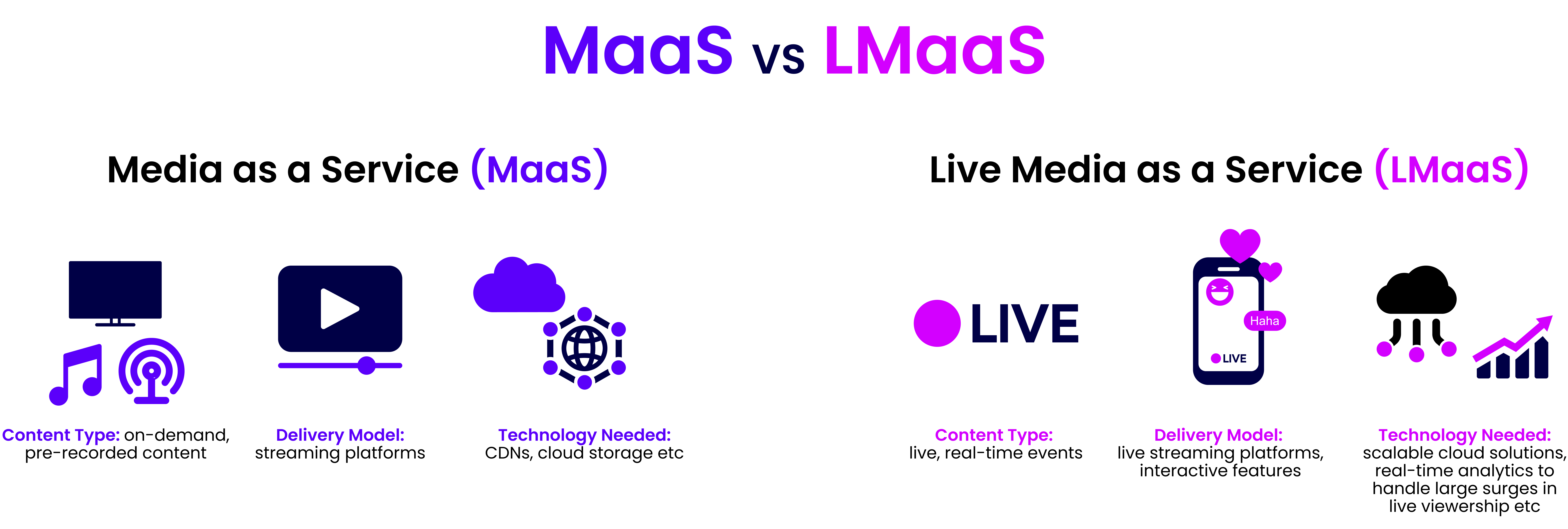
How SaaS provides the umbrella for MaaS and LMaaS
SaaS is the backbone of both MaaS and LMaaS, offering a consistent foundation that prioritizes flexibility, scalability, and accessibility. Here’s how the principles of SaaS extend across these specialized models:
☁️ Cloud-based infrastructure ☁️
Both MaaS and LMaaS leverage the cloud to host production tools, manage content, and deliver media, eliminating the need for on-premise setups.
📈 Subscription and usage-based pricing 📈
With SaaS-like pricing structures, organizations can adopt MaaS and LMaaS solutions without significant upfront costs, paying only for the features and bandwidth they need.
🔧 Seamless updates and innovation 🔧
Providers of MaaS and LMaaS continuously improve their platforms, introducing new features to enhance production workflows and viewer engagement without downtime.
Why should organizations care?
Based on what it means for consumers, it’s easy to see the value for live broadcasters and producers. Specifically, LMaaS unlocks new opportunities to reach and engage global audiences.

Streaming platforms like DAZN are using this model to offer live events that, distribution rights aside, can be accessed by viewers from around the world, bypassing geographical constraints typically tied to traditional broadcast networks.
The strategic advantage of SaaS for live content teams
For production teams and broadcasters, the rise of SaaS has transformed how live workflows are managed, bridging the gap between creative execution and technical operations. Imagine the challenge of producing multi-camera live events, managing live digital programming, and exploring alternate broadcasting channels to reach wider audiences – all while ensuring flawless performance and consistent production value. SaaS takes this complexity and turns it into an opportunity. By leveraging cloud-based platforms, teams can scale effortlessly, delivering high-quality live content that meets the growing demands of modern audiences.
Reaching those audiences used to mean navigating a maze of technical barriers, particularly when distributing content across OTT platforms, social media channels, and proprietary apps. SaaS simplifies this process, offering streamlined tools that make multi-platform distribution seamless and efficient. It ensures that broadcasters can connect with diverse viewers without compromising on reach or performance.
But the benefits don’t stop there. With real-time analytics built into many SaaS platforms, production teams gain a powerful edge. They can monitor live viewership, track engagement metrics, and pivot strategies in the moment, responding to audience behavior as it unfolds. This immediate feedback loop enables smarter decisions, ensuring every live broadcast resonates more effectively.
As audience expectations shift toward greater interactivity and personalization, SaaS platforms empower teams to meet—and exceed—those demands. Features like live chats, polls, and multiple viewing angles enhance the viewer experience, turning passive audiences into active participants. By creating deeper connections and fostering engagement, SaaS becomes more than just a technical solution; it’s the backbone of modern live production, driving both creativity and audience loyalty.
Closing thoughts: why SaaS is the future of live media
The rise of SaaS in live production marks a turning point for the industry, offering unparalleled flexibility, efficiency, and scalability. By understanding how MaaS and LMaaS extend the principles of SaaS into media-specific domains, production teams can unlock new opportunities for creativity, audience engagement, and global reach.
Whether you’re producing a high-profile sporting event or a corporate livestream, SaaS provides the tools to deliver exceptional live content without the traditional constraints of hardware-heavy workflows.
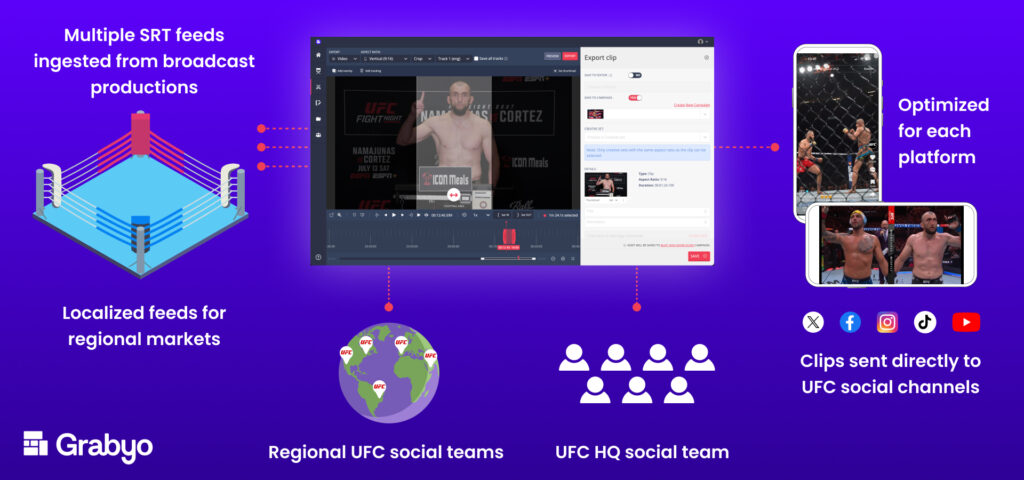
What next?
Take a look at how some of the leading organizations are breaking the mould with Grabyo. Discover how UFC has evolved its content strategy to reach fans
across every platform with live and VOD content.


